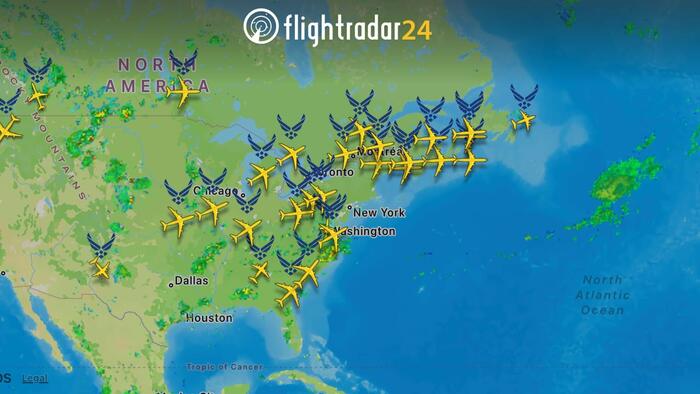
Major Updates
- Israel’s Military Strikes
- Operation Rising Lion: Israel has launched precise attacks on Iran’s nuclear facilities, oil export hubs, and key military targets (IRGC).
- Goal: Beyond defense, experts suggest these strikes aim to weaken Iran’s leadership, possibly leading to a government change.
- Scale: A leaked war map shows strikes across multiple Iranian cities, including Tehran and Isfahan (see map example).
- U.S. Involvement
- President Trump stated the U.S. is not currently involved but hinted at future action: “It’s possible we could get involved.”
- He urged Iran and Israel to negotiate but warned that U.S. intervention is likely if Iran targets American interests in the Middle East.
- U.S. Air Force Movements
- What Happened? Dozens of U.S. military tanker planes (KC-46A and KC-135) left the U.S. for Europe. These planes act like “gas stations in the sky”—refueling fighter jets mid-flight to extend their range.
- Why It Matters: Moving these tankers suggests the U.S. is preparing for a longer, wider conflict. Some landed at Moron Airbase in Spain (yes, that’s the real name!).
Potential Impacts
- Oil Prices: Analysts warn that if the conflict worsens, oil prices could skyrocket to $100+ per barrel, affecting global gas prices and the economy.
- Global Stability: A prolonged conflict risks drawing in other countries or disrupting Middle East oil supplies.
Key Terms Simplified
- IRGC: Iran’s powerful military group, involved in regional conflicts.
- Aerial Refueling: Planes refuel jets mid-air, letting them fly farther without landing.
- Regime Change: Replacing a country’s government, often by force.
TL;DR: Israel’s aggressive strikes on Iran hint at bigger goals like regime change. The U.S. isn’t fighting yet but is positioning resources for a possible crisis. Oil prices could soar if tensions escalate.